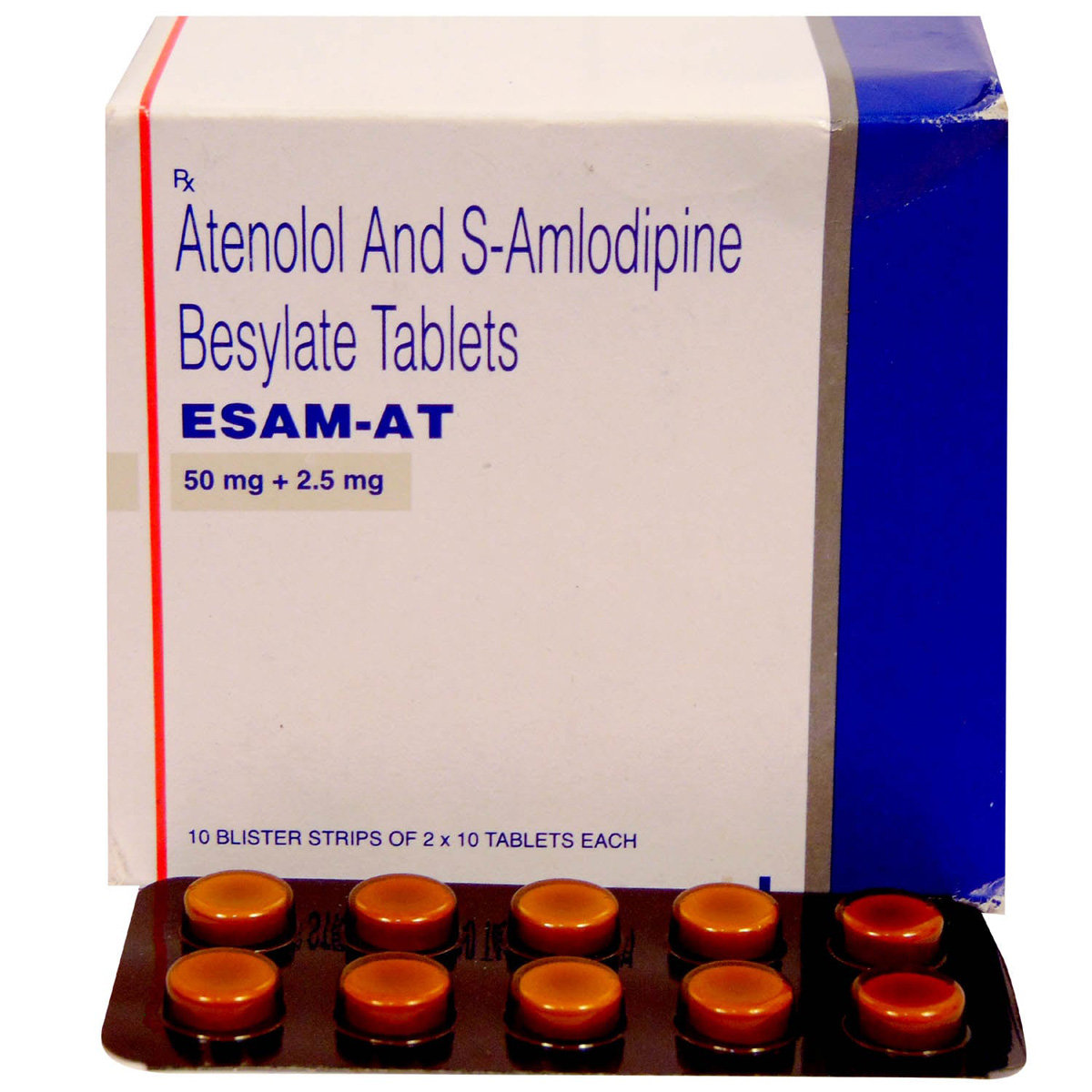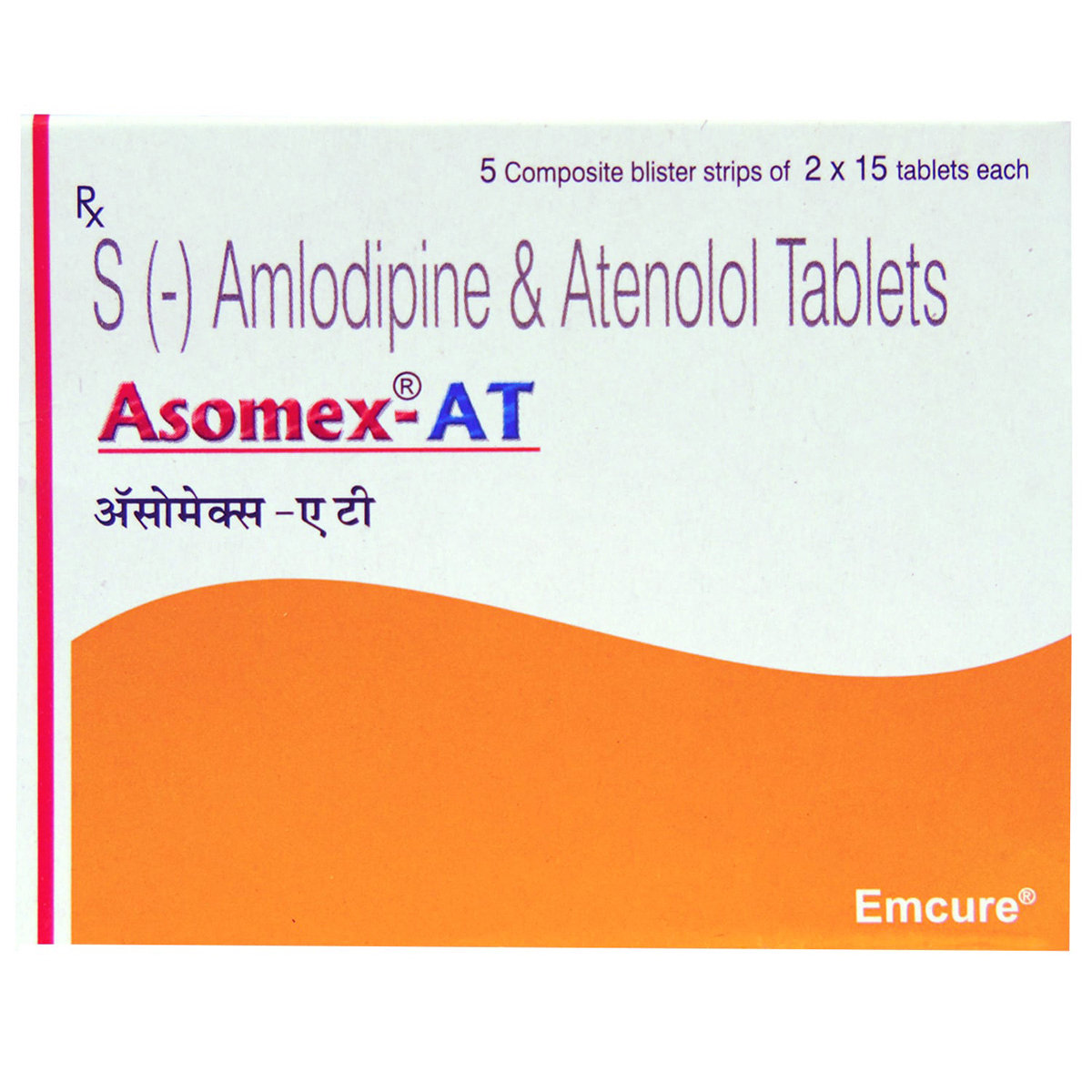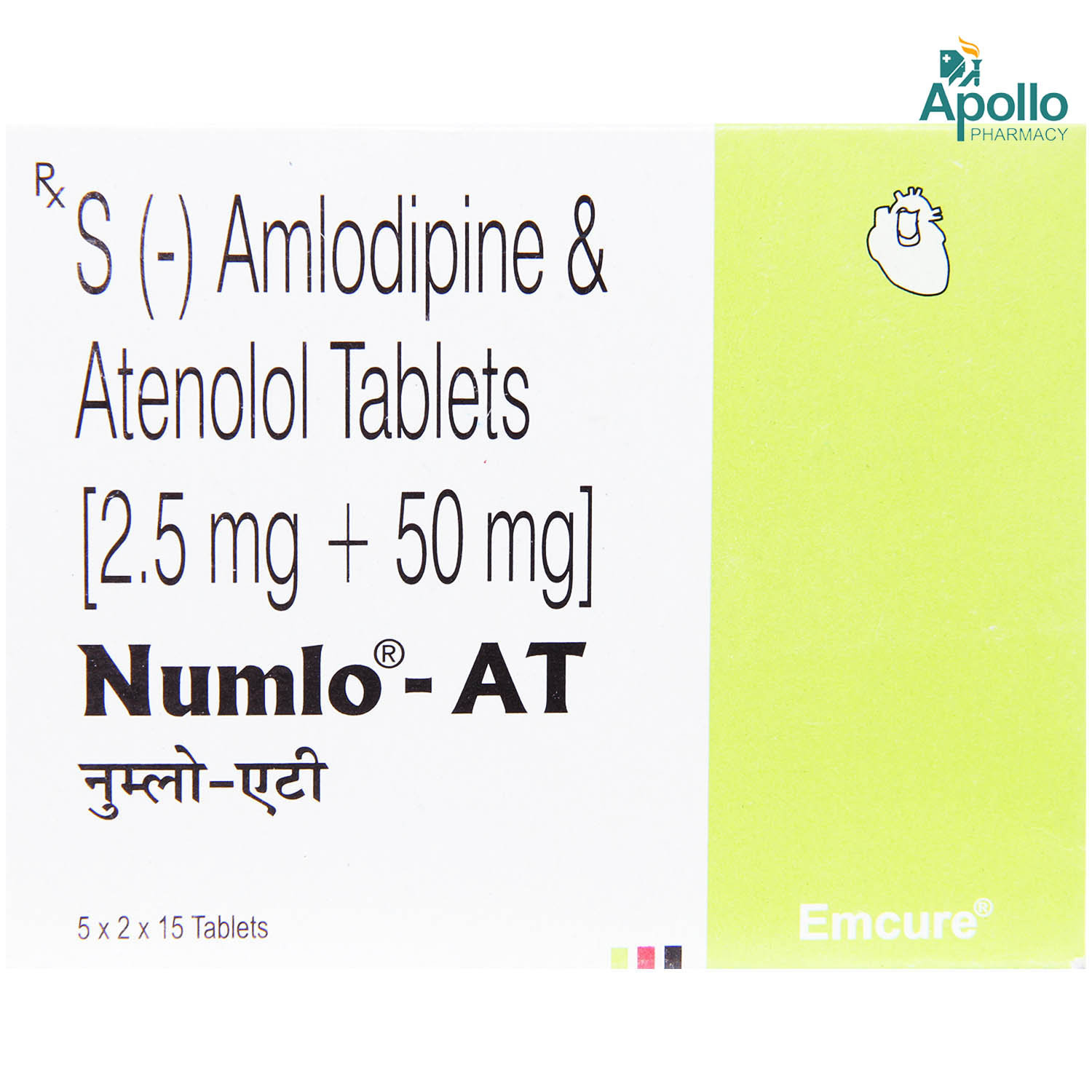Eslo-AT Tablet
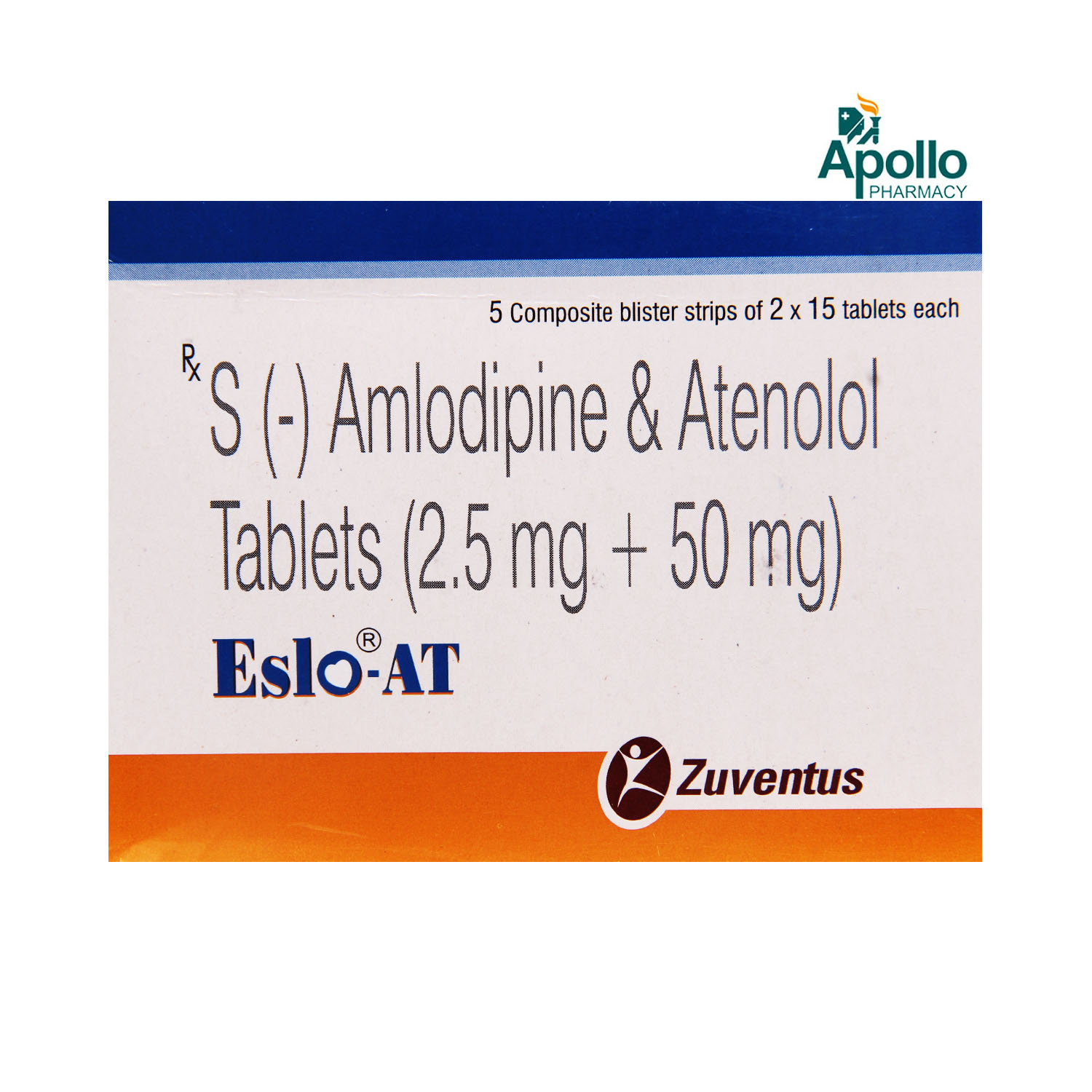
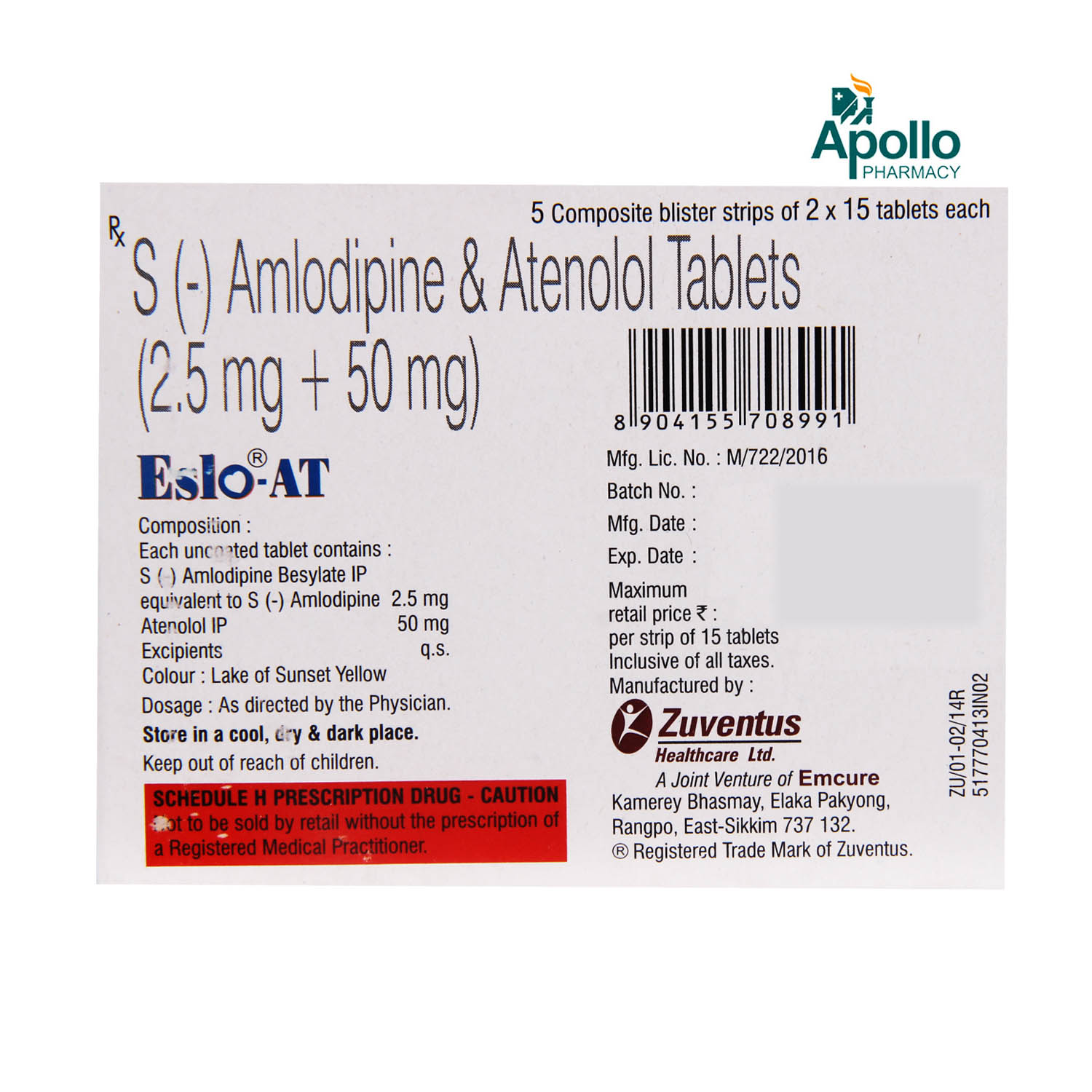
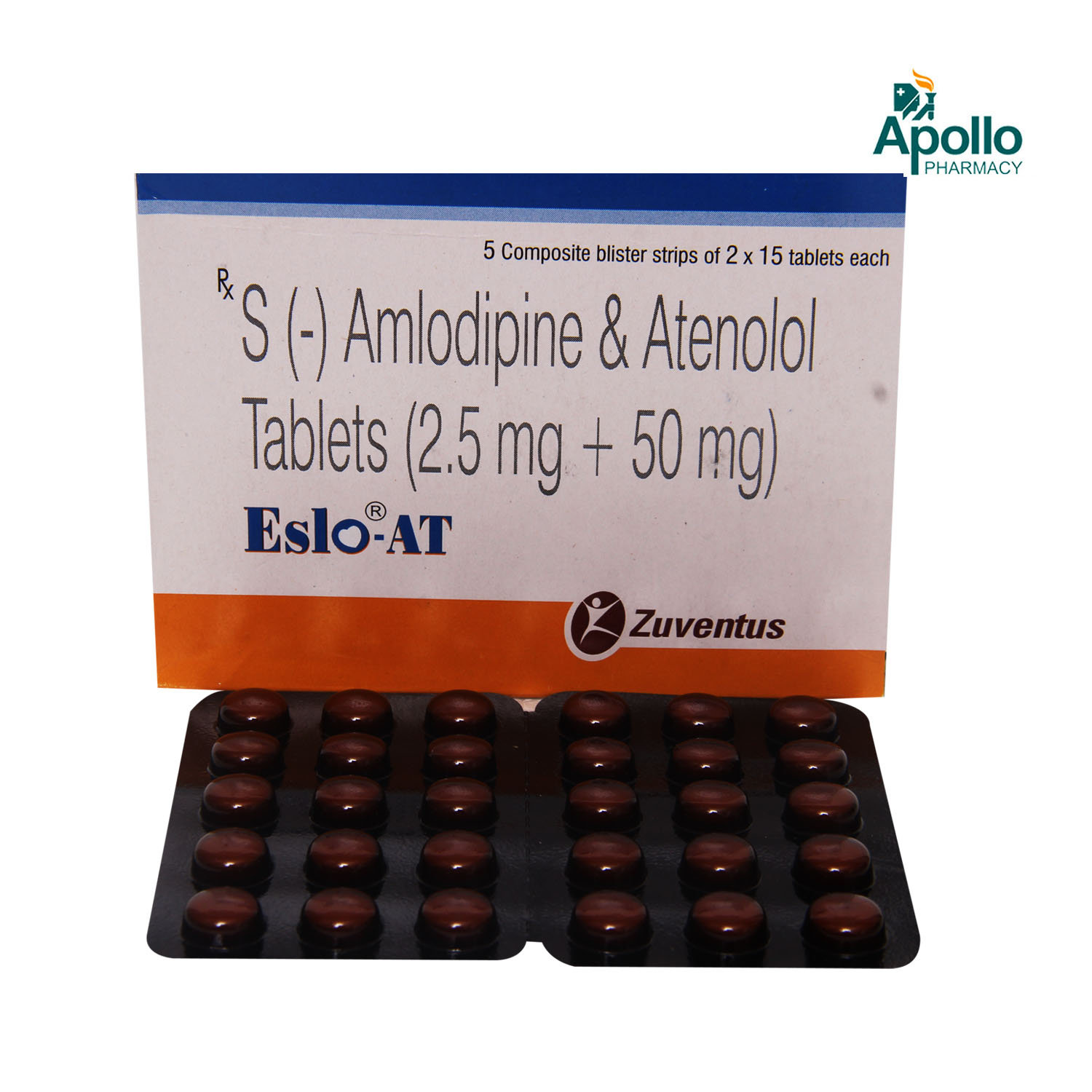
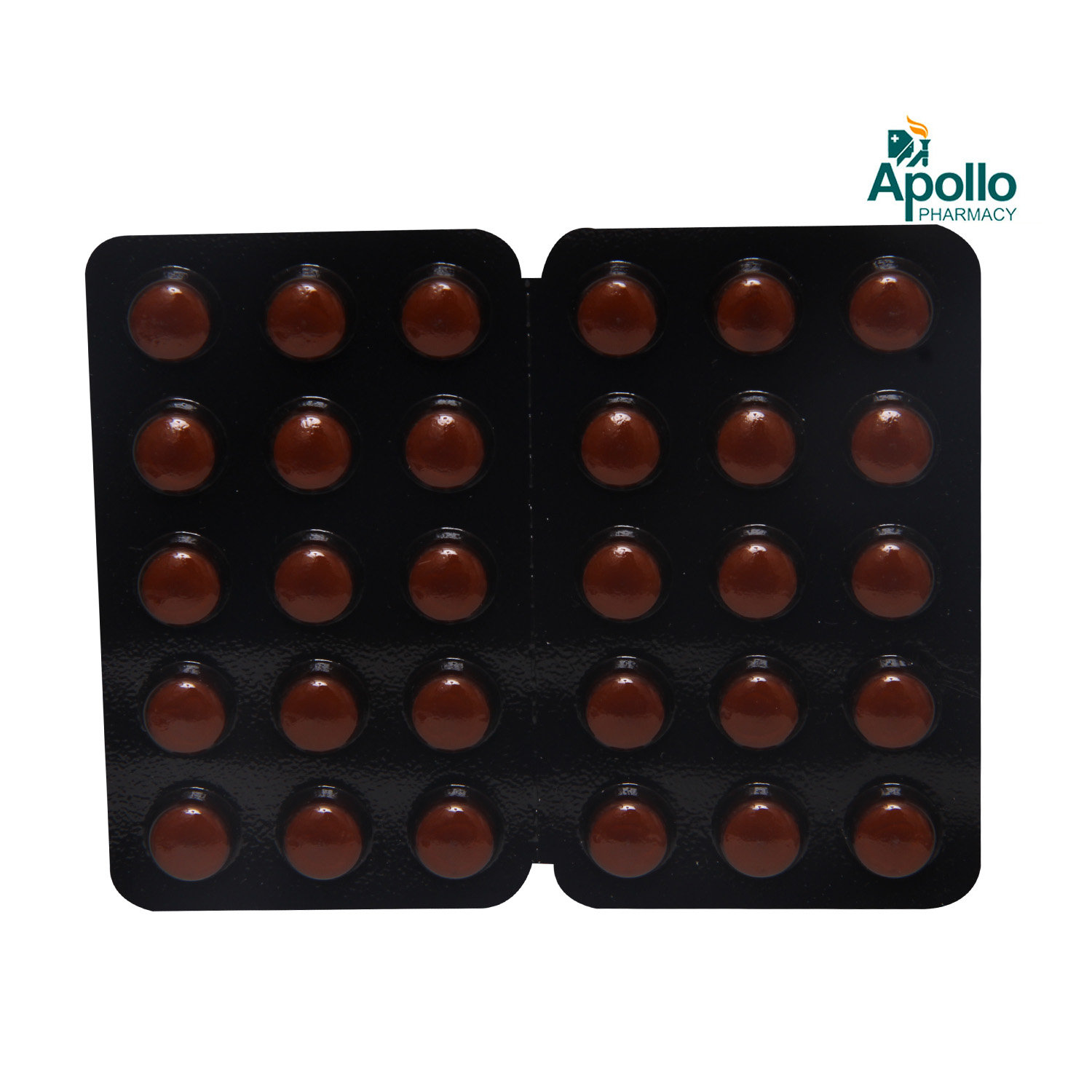
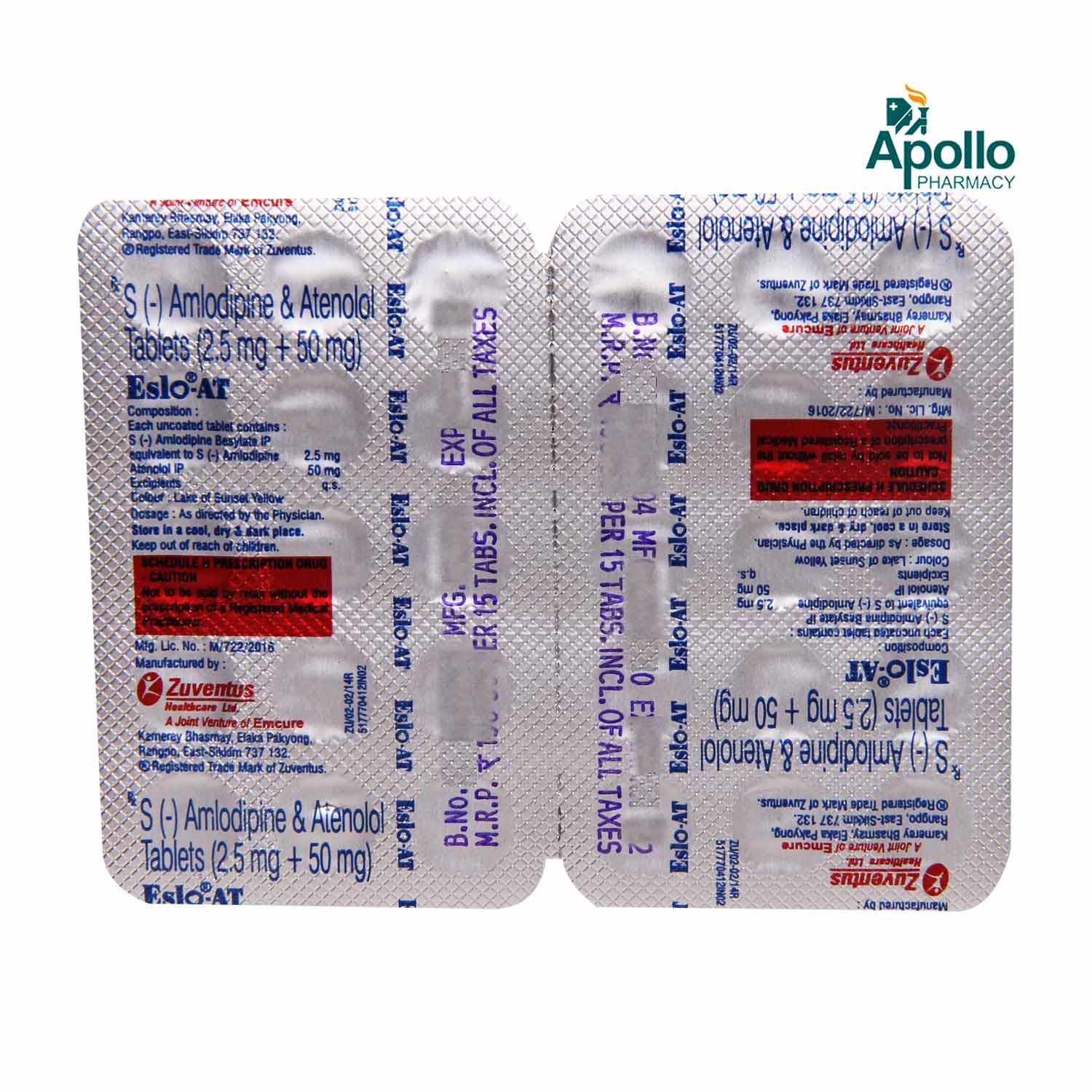
MRP ₹237.5
(Inclusive of all Taxes)
₹35.6 Cashback (15%)
know your delivery time
Provide Delivery Location
Composition :
Manufacturer/Marketer :
Consume Type :
Expires on or after :
Return Policy :

Secure Payment

Trusted by 8 Crore Indians

Genuine Products
Therapeutic Class
Country of origin
Manufacturer/Marketer address
Author Details
We provide you with authentic, trustworthy and relevant information
Disclaimer
Alcohol
Safe if prescribed
Alcohol may lower your blood pressure. It would help if you avoid or limit consuming alcohol whilst taking this medicine.
Pregnancy
Consult your doctor
Eslo-AT Tablet is not recommended during pregnancy since it may have harmful effects on the unborn baby. However, it is advised to seek medical advice before using Eslo-AT Tablet if you plan to conceive or already pregnant.
Breast Feeding
Consult your doctor
Eslo-AT Tablet is not recommended during breastfeeding since it may pass into the breast milk. Please consult your doctor before using Eslo-AT Tablet if you are a lactating mother.
Driving
Safe if prescribed
Eslo-AT Tablet may cause side effects due to lowering of the blood pressure, such as dizziness or tiredness. If you feel dizzy or tired when taking this medicine, do not drive or use any tools or machines.
Liver
Consult your doctor
Let your doctor know if you have any history of liver diseases before using Eslo-AT Tablet .
Kidney
Consult your doctor
Let your doctor know if you have any history of kidney diseases before using Eslo-AT Tablet .
Children
Safe if prescribed
Eslo-AT Tablet is not recommended for use in people below 18 years of age.
Product Substitutes
About Eslo-AT Tablet
Eslo-AT Tablet belongs to the class of 'antihypertensive drugs', primarily used to treat hypertension (high blood pressure). Hypertension is a condition in which the blood exerts high pressure (force exerted by circulating blood) against the walls of blood vessels. This condition makes the heart work harder in pumping blood to the whole body. Hypertension can cause severe health complications, including stroke, heart failure, heart attack, and kidney failure.
Eslo-AT Tablet consists of Atenolol and S-Amlodipine. Atenolol is a beta-blocker that reduces the heart rate and makes the heart pump blood efficiently throughout the body. Atenolol is also used to protect the heart during the treatment of a heart attack. S-Amlodipine is a 'calcium channel blocker.' It relaxes the blood vessels so that blood passes through them easily, thereby lowering the blood pressure. S-Amlodipine also improves blood supply to the heart muscle to receive more oxygen and thus preventing chest pain.
Your doctor will advise you how often you take Eslo-AT Tablet based on your medical condition. In some cases, you may experience nausea, tiredness, stomach upset/constipation, cold hands or feet, flushing (sense of warmth in the face, ears, neck and trunk), dizziness, headache, sleepiness, palpitations (pounding of the heart), and swelling of the ankles or feet. Most of these side effects of Eslo-AT Tablet do not require medical attention and gradually resolve over time. However, if the side effects are persistent, reach out to your doctor.
Do not stop taking Eslo-AT Tablet without consulting your doctor since it may worsen your condition and increase the risk of future heart problems. Inform your doctor if you are suffering from kidney, liver or heart diseases (aortic stenosis), diabetes, asthma, and thyroid diseases. Reducing the amount of table salt (sodium chloride) in your food often relieves the body's swelling and controls blood pressure. If you are pregnant or breastfeeding, please tell your doctor so that the dosage of Eslo-AT Tablet can be prescribed accordingly.
Uses of Eslo-AT Tablet
Medicinal Benefits Mweb
Key Benefits
Eslo-AT Tablet treats hypertension (high blood pressure). It consists of Atenolol (beta-blocker) and S-Amlodipine (calcium channel blocker). Atenolol is a 'beta-blocker' and treats high blood pressure, angina (chest pain), and uneven heartbeats (arrhythmias). It reduces the heart rate and makes the heart pump blood efficiently throughout the body. Atenolol is also used to protect the heart during the treatment of a heart attack. S-Amlodipine is a 'calcium channel blocker' and treats high blood pressure, Prinzmetal's or variant angina (chest pain), and other conditions caused by coronary artery disease. It relaxes blood vessels so that blood passes through them easily, thereby lowering the blood pressure. S-Amlodipine also improves blood supply to the heart muscle to receive more oxygen and thus preventing chest pain.
Directions for Use
Side Effects of Eslo-AT Tablet
- Tiredness
- Constipation/ stomach upset
- Dizziness
- Headache
- Nausea
- Cold hands or feet
- Flushing (sense of warmth in the face, ears, neck and trunk)
- Palpitations (pounding of the heart)
- Swelling of the ankles or feet
- Sleepiness
Drug Warnings
Do not use Eslo-AT Tablet if you are allergic to Eslo-AT Tablet or any of its components. Please inform your doctor if you are using any prescription and non-prescription medications you are taking, including vitamins, before starting Eslo-AT Tablet . Let your doctor know if you have any history of severe kidney or liver diseases, chest pain (angina), poor blood circulation or controlled heart failure, first-degree/second-degree heart block, diabetes, overactive thyroid gland, adrenal gland diseases (phaeochromocytoma), metabolic acidosis (higher levels of acid in the blood), abnormal heart rhythms and asthma before starting Eslo-AT Tablet . It is essential to let your doctor know if you are a pregnant or a breastfeeding mother before starting Eslo-AT Tablet . Eslo-AT Tablet can increase the chances of light-headedness, so rise slowly if you are sitting/lying and avoid operating any machine or doing any work that needs mental alertness until you feel better. It is not recommended to consume alcohol while being treated with Eslo-AT Tablet . Eslo-AT Tablet is not recommended in people less than 18 years of age.
Drug-Drug Interactions
Drug-Drug Interactions
Login/Sign Up
Using Eslo-AT Tablet together with dantrolene may increase the risk of hyperkalemia (high blood potassium).
How to manage the interaction:
Taking Eslo-AT Tablet with Dantrolene can cause an interaction, consult a doctor before taking it. You should seek medical attention if you experience nausea, vomiting, weakness, confusion, tingling of the hands and feet, a weak pulse, or a slow or irregular heartbeat. Do not stop using any medications without talking to a doctor.
Taking verapamil with Eslo-AT Tablet can increase the risk or severity of verapamil side effects.
How to manage the interaction:
Taking Eslo-AT Tablet and Verapamil together can result in an interaction, it can be taken if a doctor has advised it. However, if you experience, fatigue, headache, fainting, swelling of the extremities, weight gain, shortness of breath, chest pain, increased or decreased heartbeat, or irregular heartbeat, contact a doctor immediately. Do not discontinue any medications without consulting a doctor.
Using dolasetron together with Eslo-AT Tablet can increase the risk of an irregular heart rhythm that may be serious.
How to manage the interaction:
Although there is a possible interaction between Eslo-AT Tablet and Dolasetron, you can take these medicines together if prescribed by a doctor. If you have any of these symptoms, like feeling dizzy, lightheaded, or your heart beating irregularly, it's important to call a doctor right away. Do not stop using any medications without talking to a doctor.
Coadministration of Eslo-AT Tablet with aminophylline could certainly reduce the efficacy of Eslo-AT Tablet and enhance the effects of aminophylline.
How to manage the interaction:
Taking Eslo-AT Tablet alongside aminophylline can result in an interaction, it can be taken if a doctor has advised it. However, if you experience nausea, vomiting, insomnia, tremors, restlessness, uneven heartbeats, or difficulty breathing, contact a doctor immediately. Do not discontinue any medications without consulting a doctor.
Using Eslo-AT Tablet with theophylline, could increase the effects of theophylline.
How to manage the interaction:
Taking Eslo-AT Tablet and theophylline together can result in an interaction, it can be taken if a doctor has advised it. However, if you experience nausea, vomiting, insomnia, shaking of hands and legs, restlessness, uneven heartbeats, or difficulty breathing, contact the doctor immediately. Do not discontinue any medications without consulting a doctor.
Coadministration of Eslo-AT Tablet and Nebivolol may increase the risk of irregular heart rhythm.
How to manage the interaction:
Taking Eslo-AT Tablet and Nebivolol together can result in an interaction, it can be taken if a doctor has advised it. Do not discontinue any medications without consulting a doctor.
When Bisoprolol is combined with Eslo-AT Tablet the severity or risk of side effects may be increased.
How to manage the interaction:
Although there may be an interaction, Eslo-AT Tablet can be taken with bisoprolol if prescribed by the doctor. Consult the prescriber if you experience any unusual side effects. Do not discontinue the medication without consulting a doctor.
Coadministration of Eslo-AT Tablet with ceritinib can slow heart rate and increase the risk of an irregular heart rhythm.
How to manage the interaction:
Taking Eslo-AT Tablet and ceritinib together can result in an interaction, it can be taken if a doctor has advised it. However, if you experience dizziness, lightheadedness, fainting, or an irregular heartbeat while taking these medications, consult the doctor immediately. Do not discontinue any medications without consulting a doctor.
Coadministration of Tizanidine and Eslo-AT Tablet can increase the risk or severity of side effects like low blood pressure.
How to manage the interaction:
Taking Eslo-AT Tablet and tizanidine together may result in an interaction, it can be taken if your doctor has recommended it. However, if you experience headache, dizziness, lightheadedness, sweating, or palpitations, consult the doctor. Do not discontinue any medications without consulting a doctor.
The use of atazanavir with Eslo-AT Tablet may raise the risk of an abnormal heart rhythm.
How to manage the interaction:
The combination of Eslo-AT Tablet and acebutolol may result in an interaction, it can be taken if a doctor has advised it. However, if you develop sudden dizziness, lightheadedness, fainting, or irregular heartbeat, contact the doctor immediately. Do not stop using any medications without a doctor's advice.
Drug-Food Interactions
Drug-Food Interactions
Login/Sign Up
Grapefruit Juice, Grapefruit
How to manage the interaction:
The consumption of grapefruit juice may slightly increase plasma concentrations of amlodipine. Avoid consumption of grapefruit juice while being treated with Eslo-AT Tablet.
Drug-Diseases Interactions
Drug-Diseases Interactions
Login/Sign Up
Drug-Drug Interactions Checker List
- CLONIDINE
- VERAPAMIL
- DILTIAZEM
- NIFEDIPINE
- IBUPROFEN
- NAPROXEN
- INDOMETHACIN
- VITAMIN D
- AMIODARONE
- QUINIDINE
- DISOPYRAMIDE
- INSULIN
- EPINEPHRINE
Habit Forming
Special Advise
- Monitor your blood pressure regularly and seek medical advice if you notice any drastic fluctuations.
- Let your anesthesiologist or medical staff know that you are taking Eslo-AT Tablet since Atenolol can lower blood pressure levels when certain anaesthetic medications are given during any operation or surgery.
Diet & Lifestyle Advise
- Keep your weight under control with body mass index (BMI) between 19.5 and 24.9.
- Do regular physical activity or exercise for at least 150 minutes per week, or about 30 minutes, most days of the week. Doing this can help you to lower your raised blood pressure by about 5 mm of Hg.
- Limit sodium chloride intake (table salt) in your daily diet to 2300 mg per day or less than 1500 mg is ideal for most adults.
- If you are taking alcohol, use only one serving for women and two servings for men.
- Quit smoking to lower the risk of heart diseases.
- Avoid chronic stress as it can raise your blood pressure. Try to enjoy and spent time with your loved ones to cope with stress.
- Monitor your blood pressure daily, and if you notice any fluctuations frequently, please contact your doctor immediately.
- Try including heart-healthy omega 3 fatty acid-containing foods in your daily diet. You can also use low-fat cooking oils like olive oil, soybean oil, canola oil, and coconut oil to lower your elevated blood pressure.
All Substitutes & Brand Comparisons
RX
Out of StockEsloza-AT Tablet 10's
Medinza Biotech
₹30
(₹2.7 per unit)
81% CHEAPERRX
S-Amlosafe AT Tablet 10's
Aristo Pharmaceuticals Pvt Ltd
₹44
(₹3.96 per unit)
72% CHEAPERRX
Out of StockS Amlosafe AT 2.5/50 Tablet 10's
Aristo Pharmaceuticals Pvt Ltd
₹54.5
(₹4.91 per unit)
65% CHEAPER

Have a query?
Buy best Cardiology products by
Torrent Pharmaceuticals Ltd
Sun Pharmaceutical Industries Ltd
Lupin Ltd
Intas Pharmaceuticals Ltd
Cipla Ltd
Micro Labs Ltd
Macleods Pharmaceuticals Ltd
Abbott India Ltd
Ajanta Pharma Ltd
Ipca Laboratories Ltd
Eris Life Sciences Ltd
Mankind Pharma Pvt Ltd
Lloyd Healthcare Pvt Ltd
Dr Reddy's Laboratories Ltd
Glenmark Pharmaceuticals Ltd
Emcure Pharmaceuticals Ltd
Alembic Pharmaceuticals Ltd
Alkem Laboratories Ltd
East West Pharma India Pvt Ltd
USV Pvt Ltd
Zydus Healthcare Ltd
Aristo Pharmaceuticals Pvt Ltd
Elbrit Life Sciences Pvt Ltd
J B Chemicals & Pharmaceuticals Ltd
Zydus Cadila
Akumentis Healthcare Ltd
Alteus Biogenics Pvt Ltd
Hbc Life Sciences Pvt Ltd
Fusion Health Care Pvt Ltd
Troikaa Pharmaceuticals Ltd
La Renon Healthcare Pvt Ltd
Corona Remedies Pvt Ltd
Jubilant Lifesciences Ltd
Medley Pharmaceuticals Ltd
Knoll Healthcare Pvt Ltd
Msn Laboratories Pvt Ltd
Zuventus Healthcare Ltd
Cadila Pharmaceuticals Ltd
Blue Cross Laboratories Pvt Ltd
Lividus Pharmaceuticals Pvt Ltd
Morepen Laboratories Ltd
Ranmarc Labs
Shrrishti Health Care Products Pvt Ltd
Sanofi India Ltd
Steris Healthcare
Elder Pharmaceuticals Ltd
Primus Remedies Pvt Ltd
Unison Pharmaceuticals Pvt Ltd
Eswar Therapeutics Pvt Ltd
Knoll Pharmaceuticals Ltd
Tas Med India Pvt Ltd
Systopic Laboratories Pvt Ltd
Indiabulls Pharmaceuticals Pvt Ltd
Leeford Healthcare Ltd
Sinsan Pharmaceuticals Pvt Ltd
Biochem Pharmaceutical Industries Ltd
Cadila Healthcare Ltd
Azkka Pharmaceuticals Pvt Ltd
Nirvana India Pvt Ltd
Orsim Pharma
Prevego Healthcare & Research Pvt Ltd
Econ Healthcare
Elinor Pharmaceuticals (P) Ltd
FDC Ltd
Sunij Pharma Pvt Ltd
Nicholas Piramal India Ltd
Astra Zeneca Pharma India Ltd
Pfizer Ltd
Lia Life Sciences Pvt Ltd
Shine Pharmaceuticals Ltd
Elicad Pharmaceuticals Pvt Ltd
Indoco Remedies Ltd
Proqol Health Care Pvt Ltd
Vasu Organics Pvt Ltd
Biocon Ltd
Opsis Care Lifesciences Pvt Ltd
Johnlee Pharmaceuticals Pvt Ltd
Merck Ltd
Wockhardt Ltd
Auspharma Pvt Ltd
Ergos Life Sciences Pvt Ltd
Lakshya Life Sciences Pvt Ltd
Ordain Health Care Global Pvt Ltd
Pficus De Med Pvt Ltd
ALICAN PHARMACEUTICAL PVT LTD
RPG Life Sciences Ltd
Glynis Pharmaceuticals Pvt Ltd
Orris Pharmaceuticals
Samarth Life Sciences Pvt Ltd
Aprica Pharmaceuticals Pvt Ltd
Aretaeus Pharmaceuticals Pvt Ltd
Koye Pharmaceuticals Pvt Ltd
Neocardiab Care
Retra Life Science Pvt Ltd
Alniche Life Sciences Pvt Ltd
Alvio Pharmaceuticals Pvt Ltd
Arkas Pharma Pvt Ltd
Atos Lifesciences Pvt Ltd
Divine Savior Pvt Ltd
Metalis Lifesciences Pvt Ltd
Customers Also Bought
Recommended for a 30-day course: 2 Strips


_0.jpg?tr=q-85)



